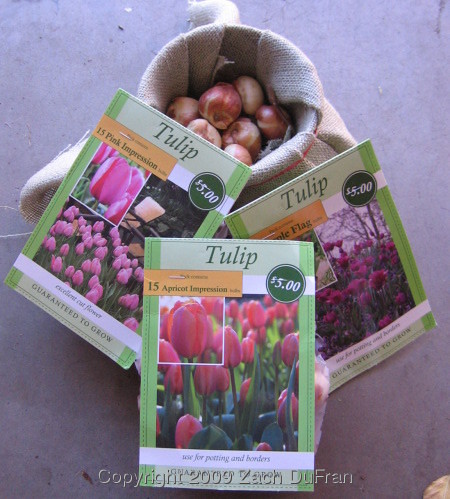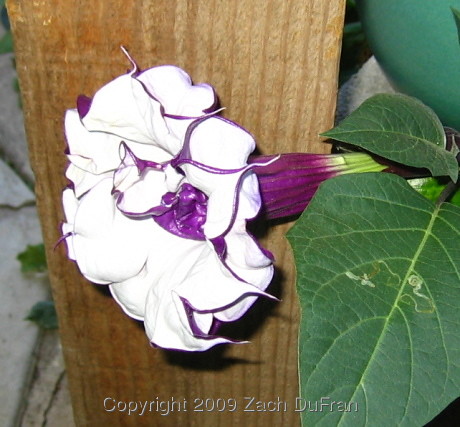My family heads down to Lake Texoma (on Oklahoma's southern border) on the weekends during the Summer, to ride around the lake on our boat and waterski. There is a nearby area we like to call "Jurassic Park" because of its thick vegetation. We drive in on a golf cart and forget that we are in the central United States. You almost feel like you are in a South American jungle, unless you look closely at the type of plants growing. Looking at the vegetation, I never saw anything spectacular (in the tropical sense). That is, until recently.
The picture below is of a Passionflower bloom that I cut off of a plant growing wild in "Jurassic Park," about 100 yards from the waters of Lake Texoma. It is unlikely that this plant was growing there natively, but it is also unlikely that it was planted. My guess is that somewhere nearby this plant is in someone's garden and a bird ate from the fruit and deposited the seed in this location.
I have heard people talk about how hardy Passionflowers can be very invasive in our climate. The first year the plant is beautiful and robust and the next year there are plants coming up everywhere. But I hadn't seen this in person, so, like Thomas, I doubted. Now I have seen some of this Passionflower growing wild in a very unexpected location. This area was the last place I expected to see a beautiful flower that looks so tropical. The plants were covering much of the undergrowth and were bearing fruits in many areas. Once you saw one, you would see tens of them. Your eyes just had to be attuned.
I immediately wanted to bring some of this plant home with me. First, I tried digging up some of the smaller plants and bringing them home with me, but it was very difficult to dig up the plants and bring the roots along. The plants died within a matter of days. To add injury to insult, I ended up covered in poison ivy that lasted for several weeks. It was miserable.
A couple of weeks later, against the recommendations of all of my family members, I went back to take cuttings of these plants. This time I was very wary of the poison ivy and stayed free of it. The cuttings stayed green for a couple of weeks and I held out hope that they would produce roots, but none of them did and eventually the cuttings withered and died.
If you happen to have a tip for taking cuttings of Passionflowers, I would love to hear it.
The picture below is of a Passionflower bloom that I cut off of a plant growing wild in "Jurassic Park," about 100 yards from the waters of Lake Texoma. It is unlikely that this plant was growing there natively, but it is also unlikely that it was planted. My guess is that somewhere nearby this plant is in someone's garden and a bird ate from the fruit and deposited the seed in this location.
 |
| Passiflora incarnata bloom, cut from plants growing wild in southern Oklahoma |
I immediately wanted to bring some of this plant home with me. First, I tried digging up some of the smaller plants and bringing them home with me, but it was very difficult to dig up the plants and bring the roots along. The plants died within a matter of days. To add injury to insult, I ended up covered in poison ivy that lasted for several weeks. It was miserable.
A couple of weeks later, against the recommendations of all of my family members, I went back to take cuttings of these plants. This time I was very wary of the poison ivy and stayed free of it. The cuttings stayed green for a couple of weeks and I held out hope that they would produce roots, but none of them did and eventually the cuttings withered and died.
If you happen to have a tip for taking cuttings of Passionflowers, I would love to hear it.









